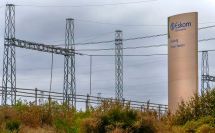By Daphne Mokwena
The steadfast implementation of the country’s Energy Action Plan has ensured an improved performance in our energy generation system and has led to a measurable decline in the severity of load shedding, despite the outlier of Stage 6 in February 2024.
Our Energy Availability Factor (EAF), which measures the performance of the Eskom power stations, achieved 60 percent for the first time for a brief period last year and has stabilised at around 55 percent for year-to-date despite the deliberate increase of planned maintenance which also contributes to the EAF.
The trend shows that government’s suite of interventions under our energy plan is helping turnaround our power generation system. Its five bold interventions, announced by President Cyril Ramaphosa in 2022 has brought a new sense of direction, accountability, and urgency to overcome our energy challenge.
As a result, wide-ranging reforms are being implemented to enable amongst others private investment in electricity generation, along with the procurement of new generation capacity from solar, wind, gas and battery storage.
These interventions are driven at the highest level through the National Energy Crisis Committee (NECOM) which is led by Government and supported by business. To improve our existing electricity supply, Eskom deployed technical experts to six priority power stations to increase their performance.
This technical support has for example helped the Kusile Power Station’s Unit 1 and Unit 3 return to operation a full two months ahead of schedule. Moreover, Kusile’s Unit 2 has also come online providing up to an additional combined 2 400MW of generation capacity. The refurbishment projects initiated at the other priority power stations are also progressing well.
Whilst we have intensified planned maintenance, taken a Unit at Koeberg on a Long-Term Operation (LTO), returned some of the units which were on long-term unplanned outages, synchronised Kusile Unit 5 (800MW) into the grid, sustained the performance of the Eskom flagship Power Stations we are, however, not where we would like to be in the performance of our generation fleet. The minimum EAF set by energy regulator Nersa is 65 percent and until we reach this target every megawatt of electricity produced is precious to our national grid.
We do anticipate fluctuations in the Energy Availability Factor (EAF) as generation units are taken out of service for dedicated maintenance. However, we are targeting an average EAF of 65 percent by March 2024. By the end of 2024, plans to return Medupi Unit 4 (800MW), synchronise Kusile Unit 6 (800MW) to the grid for the first time, and complete the Koeberg Unit 2 (900MW) Long Term Operation project, are progressing well. These actions will bring an additional combined capacity of 2 500MW into the grid.
An important contributor to securing our energy supply has been the uptake of rooftop solar which has helped to ease pressure on the national grid. Installed rooftop solar generation has more than doubled to over 4 500 MW in the last year.
Moreover, 1 000MW of new additional generation capacity from rooftop solar is expected as more municipalities allow customers to feed electricity into the grid which is an incentive for businesses to invest in alternative energy sources.
To further reduce current capacity constraints, Eskom launched a Cross-Border Standard Offer Programme to purchase electricity from Independent Power Producers and utilities in neighbouring countries. The programme is expected to add 1 000MW to the national electricity grid and gives impetus to efforts to add more megawatts to reduce the frequency of loadshedding.
In building our future energy supply, we have enabled private sector investment into generation capacity, thereby transforming the electricity sector. Regulatory reforms we have initiated have enabled a massive increase in private investment in electricity generation, with over 12 000MW of confirmed projects in development.
To ensure that our country never experiences power shortages again, government is implementing reforms to create a competitive electricity market and an independent national grid operator. Cabinet approved the Electricity Regulation Amendment Bill to be tabled in Parliament, to establish a competitive market for electricity generation.
The bill is an enabler of a competitive electricity market and introduces a number of new role players including a transmitter, system operator, market operator, and a central purchasing agency, supporting efforts to unbundle Eskom and modernise the energy sector.
Beyond our immediate energy crunch, there are solid signs of progress to lessen our energy challenges. There is every reason to hope that the steady progress we are making will resolve the energy crisis and bring load shedding to an end.
Daphne Mokwena is Eskom Spokesperson





